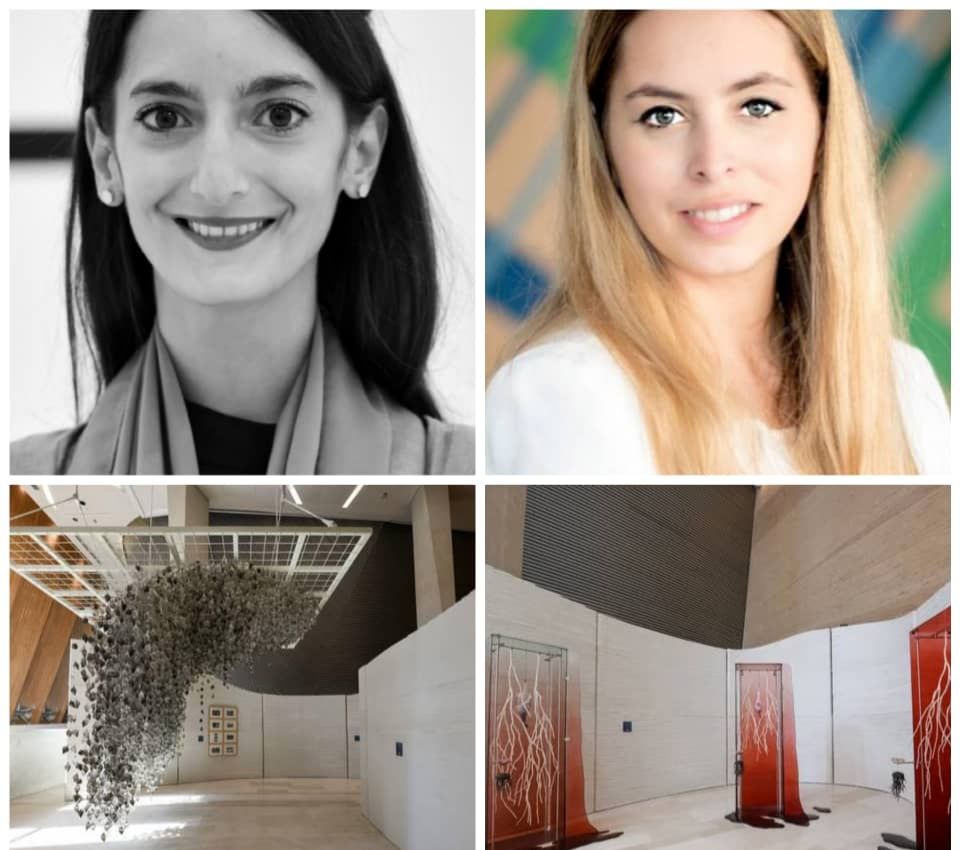Farah Abushullaih | Candida Pestana | The King Abdulaziz Center for World Culture in Dhahran
Farah Abushullaih and Candida Pestana Talked About Net Zero in ithra

The King Abdulaziz Center for World Culture in Dhahran has been exhibited “Net Zero” with 17 international and two Saudi artists at Ithra
IranArt : At The King Abdulaziz Center for World Culture in Dhahran, Ithra’s latest exhibition Net Zero spotlights sustainability, the environment and how humanity can rethink its relationship with nature.
Curated by Candida Pestana, the show features the work of 19 local and international contemporary artists and aims to offer a creative way to create awareness and engagement around the world’s attempt to achieve net zero, especially in the arts industry.
“The Net Zero exhibition showcases the realities of our present environmental challenges and the hopeful visions of a better future through the work of contemporary artists,” Pestana says.

“It is crucial for us to address these topics and develop sustainable solutions for the museum and exhibitions sector, enabling active participation in the continuing global conversation. Our goal is to share the genuine perspectives, thoughts, and insights of these artists with the audience.”
Jordanian architect and visual artist Dina Haddadin’s installation Fine to Finite tackles the abuse of nature’s resources for human consumption and expansion. Photo: Ithra
The exhibit is the first of its kind for Ithra and will be completely zero waste, taking into account not just the artworks on display, but how they are installed and the scenography needed to host a large-scale show. Even the event catalogues and labels are made with recycled and plantable materials.
“The design itself is all related to the themes of sustainability and how to transition into recovery one day,” Ithra's head of museums Farah Abushullaih tells The National.
“We want to raise awareness for our visitors here in Saudi and in the region, to start asking more questions about sustainability and what it means in their daily life; hoping that this exhibition will spark curiosity enough for them to want to change something in the habits of their daily lives, to better the environment and themselves in the future.

“All the material that we're using are sustainable and the walls that we have designed with our design partner ACCIONA Cultura are 3D printed concrete walls,” she adds. “We plan on having an afterlife for this exhibition and these walls are going to be the centre of a future project.”
Zahra Al Ghamdi’s site-specific piece City of Thorns uses thorns as a symbol of nature’s resilience. Photo: Ithra
Nine of the artworks have been specially commissioned for Net Zero, ranging from sculptures and paintings to multimedia installations, including works by Saudi artist Zahrah Al Ghamdi, Canadian artist Ava Roth and American visual artist Emil Lukas.
Ghamdi’s site-specific piece City of Thorns, made entirely of thorns as a symbol of nature’s resilience, dissects the effects of climate change on our cities, underscoring the responsibility we bear to protect the natural environment for future generations.
Jordanian architect and visual artist Dina Haddadin’s installation Fine to Finite tackles the abuse of nature’s resources for human consumption and expansion. It consists of a central sculpture made of sand and resin (the finite), and an audiovisual installation (the infinite digital), in a circular space.
“Being an architect, I’m conscious of what materials we use and in 2017 I ran an article about sand mining and how it's affecting deltas, rivers and the land; how there are actually gangsters and people getting killed because of this issue,” Haddadin tells The National.
“I discovered that the sand we use in our construction, glass mirrors and concrete is not the sand available in the desert. Instead it's a very finite resource from rivers and bays that we have to take care of.
“It's an immersive installation, so there is a multimedia part and a sculptural part, which looks a bit like a ruined temple. It's on a rotating platform, which also resembles machinery and the ever-changing technology,” she adds. “The sound part is a combination of the sounds of rivers, crushed glass and the whistling sound you can make with your finger on the rim of a glass, symbolising the human element of this issue.”

She hopes the piece will make viewers reflect on where these materials come from and to look for recycled concrete and glass as a sustainable alternative, especially in instances of demolition or rubble left from earthquakes or other such disasters.
Nine of the artworks have been specially commissioned for Net Zero, ranging from sculptures and paintings to multimedia installations. Photo: Ithra
Danish art collective Superflex presented a series of experimental sculptures titled As Close as We Get, which intends to serve as both art for humans and potential habitats for marine life, when installed in and around bays and shorelines.
With maximum surface area needed to promote life, the sculptures are made of modular, unevenly-shaped waste stone blocks salvaged from quarries, stacked together. The project is inspired by a three-year research expedition they took part in on a vessel in the Pacific, joined by experts.

“We thought it would be a wonderful thing to start to understand the preferences of marine life, especially since sea levels are rising,” co-founder Bjornstjerne Christiansen says. “We spent time looking at coralline algea reefs and we learnt that we need to move away from creating straight, smooth structure, to allow life to inhabit something.
“In Copenhagen, we have placed several of these in the harbour and experimenting to see what kind of life they actually attract,” he adds. “They’re both concrete experiments in science, but also sculptures that work as motivators for humans to transform the way we think about our infrastructure.”
Net Zero runs until June 2024 alongside a public programme of workshops and sessions on recycling, which will provide practical tips for people to apply in their everyday lives.

